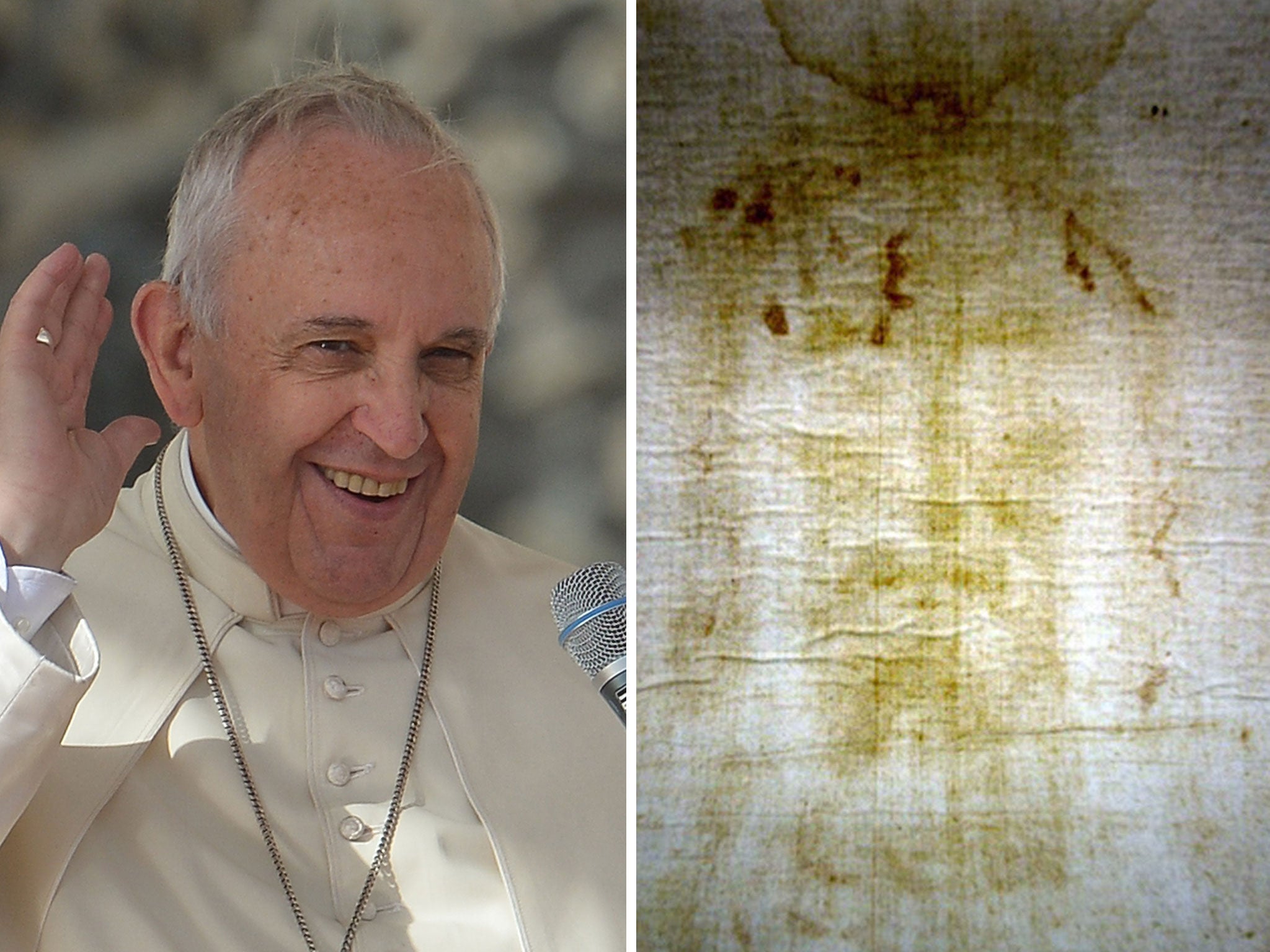Pope Francis announces decision to make pilgrimage to the Turin Shroud - despite latest research claiming it's a fraud
Francis has previously stayed vague in his comments regarding the relic – which some Christians believe shows the face of Jesus Christ

Pope Francis has revealed that he follow in the footsteps of his predecessors by travelling to venerate the Turin Shroud when it reopens to the public next year – days after the publication of the latest in a long line of historical articles debunking the veracity of the controversial relic.
Millions of Christians are expected to make the pilgrimage to see the strip of cloth when it is exhibited at Turin’s cathedral between 19 April and 24 June.
While many Catholics believe the shroud was used to cover the body of Jesus Christ after he was crucified, previous popes have been careful to avoid saying they believe it does indeed show his ghostly image.
Pope Benedict XVI visited the shroud when it was last open to the public in 2010 and called it a cloth “written with the blood” of a crucified man. John Paul II saw the shroud three times, twice as Pope, but did not go further than describing it as an “icon” that encouraged faith in Christian believers.
Announcing his decision to visit the shroud at the end of his general audience in St Peter’s Square on Wednesday, Francis said he would go on 21 June “on pilgrimage to Turin to venerate the Holy Shroud”. He said he would also use the trip to honour the 200th anniversary of the birth of St John Bosco, founder of the Salesian religious order.
The Pope has commented publicly on the shroud before. In an address last year he said the face shown in the relic represented “all those faces of men and women marred by a life which does not respect their dignity, by war and violence which afflict the weakest”.
Pope Francis gives life advice: in pictures
Show all 10Hailing Francis’ visit, Archbishop Cesare Nosiglia of Turin said he would be coming as “a pilgrim of faith and of love”, the Catholic Herald reported.
“Like his predecessors, Pope Francis, too, confirms that devotion to the shroud that millions and millions of pilgrims recognise as a sign of the mystery of the passion and death of the Lord,” the archbishop said. He said the shroud was both a “reality” and “deep mystery”, to which science has failed to give “concrete answers”.
It’s good news for those who commit to the belief that the 14-foot cloth, held now in a climate-controlled case in Turin, shows the face of Christ himself.
Hotly-disputed evidence from carbon-dating in 1988 suggested that samples from the cloth dated only to the 14th century, prompting many to dismiss the shroud as an elaborate medieval forgery.
In this November’s issue of History Today, the British scholar Charles Freeman explained how this might have come about – pointing to descriptions and depictions of the shroud, none made before 1355, as evidence. His essay argued that the cloth was most likely used as a prop for medieval Easter rituals.
Earlier this year, researchers from the Politecnico di Torino put forward another theory – that the unusual photo-negative image on the shroud may have been formed by a massive, 8.2-magnitude earthquake recorded in Jerusalem in 33 AD.
The scientists said that such seismic activity – the same year Christians believe Jesus was crucified – would have been strong enough to release neutron particles from crushed rock, potentially then imprinting an X-ray-like image onto the linen with a flood of neutrons. This could also throw out the accuracy of any attempts at carbon dating, they suggested.
Either way, the shroud remains one of the most disputed and controversial historical artefacts in human history.
Subscribe to Independent Premium to bookmark this article
Want to bookmark your favourite articles and stories to read or reference later? Start your Independent Premium subscription today.

Join our commenting forum
Join thought-provoking conversations, follow other Independent readers and see their replies